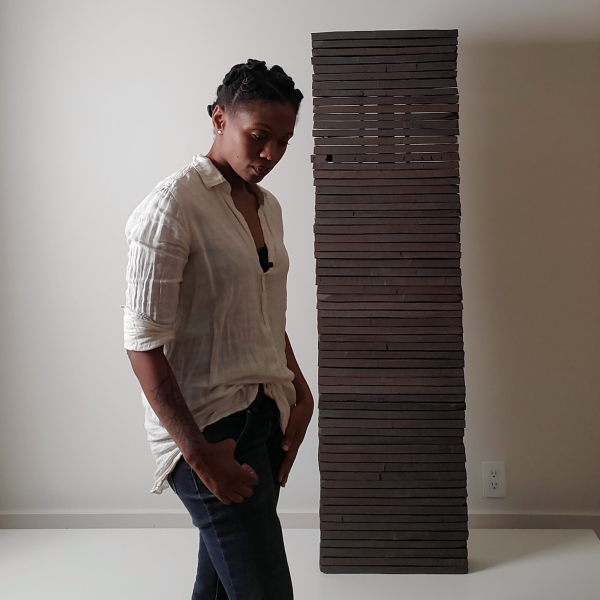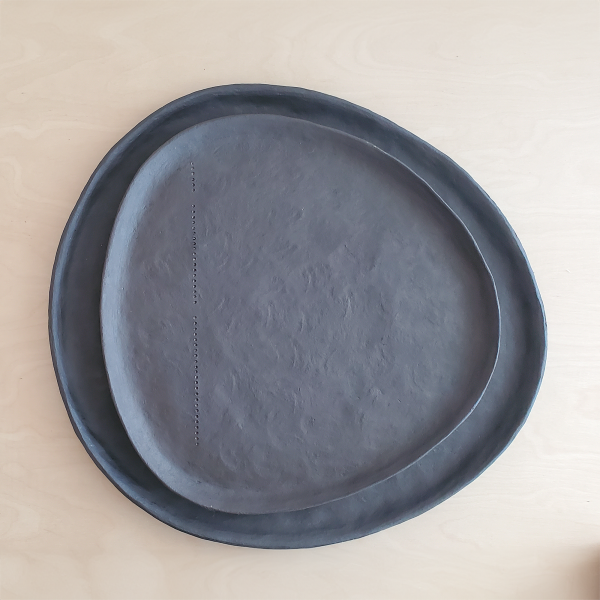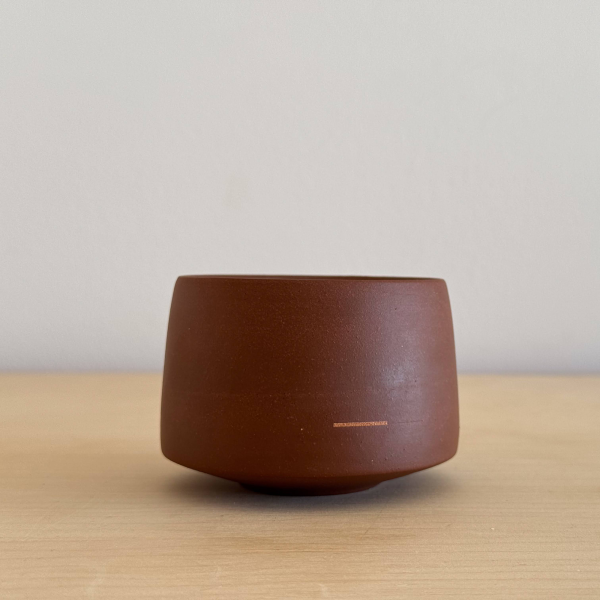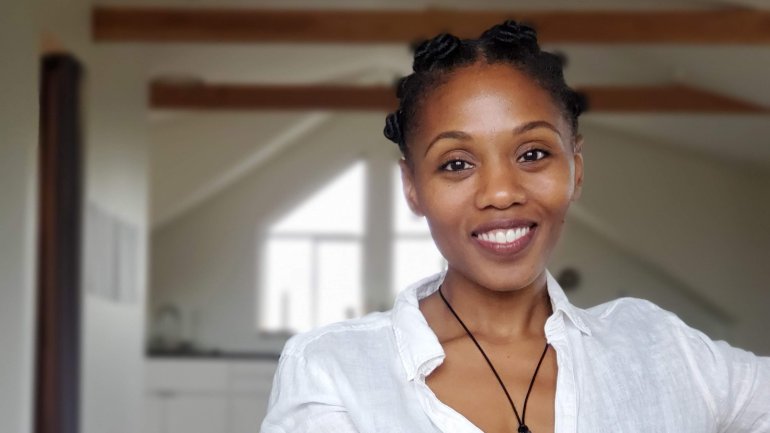The Queue: Kristina Batiste
The Queue: Kristina Batiste
Powerful ideas radiate off Kristina Batiste’s minimalist forms.
Kristina Batiste is a relative latecomer to the world of ceramics. She dove into the clay scene in Tacoma, Washington, where she lives, in her 30s, finding community at the local community college and art supply store. Batiste’s purposeful, simple work is remarkably refined and mature, belying her relatively short time working with clay. But, she says, “I’ve always loved a well-made thing, whether it’s furniture, a building, an essay, or a cup. Appreciating quality is addictive.” Batiste’s body of work spans functional tableware and larger sculptural work that probes Black history. Her 2024 abstract portrait of the civil rights activist and organizer Fannie Lou Hamer stacks richly hued black clay slabs five feet four inches tall, echoing a quote from Hamer: “But if I fall, I’ll fall five feet four inches forward in the fight for freedom.” Batiste also works as a librarian, where she discovers and makes accessible complex information. Her ceramic work accomplishes this as well, distilling thorny ideas and histories into sleek, striking objects. Seattle-based writer and professor Kemi Adeyemi wrote about Batiste’s work in “Power In Simplicity” in the Summer 2024 issue of American Craft.
How do you describe your work or practice in 50 words or less?
I can do it in four: I’m a minimalist potter.

Batiste with her 2024 abstract stoneware portrait of Fannie Lou Hamer, five feet four inches forward, 5 ft. 4 in. x 17 in. x 5 in. Photo by Kristina Batiste.
Minimalism is a through line in your work. Tell us about minimalist artists or minimalist artworks that inspire you.
Three of my favorites are Sol LeWitt, Agnes Martin, and Barnett Newman. They all have such mastery over the power of a line, and I find LeWitt’s wall drawings, Newman’s zips, and Martin’s grids remarkably compelling.
Your ceramic work is both functional and has a social practice component. How do you balance these goals when you create? Does form follow idea, or idea follow form?
In my practice, forms and techniques are ways of thinking about and refining ideas—it’s not a sequential process. In the same way that a word or phrase can help crystallize and express an idea, a form can shape and help define a concept. Forms and techniques are my vocabulary. The drafting and execution of a piece is part of the cognitive process that brings the work to life.
What are your favorite tools for working with clay, and why?
Yellow Mudtools ribs. Half of my time is spent burnishing. ScotchBlue Ultra Sharp Lines Painter’s Tape and really sharp scissors. The other half of my time is spent making and refining lines.
If you could have ceramics from any artist for your own kitchen, whose work would it be and why?
Wu Wei-Cheng. His work is just sublime. It has an architectural quality I find incredibly appealing, and his use of line, subtle texture, and composition will bring a tear to your eye.
Which craft artists, exhibitions, or projects (from anywhere) do you think the world should know about, and why?
Dan Elborne in Australia created one of the single most moving works I’ve ever experienced. I learned about 48 Hours 24 Minutes and 15 Seconds when he was first making and exhibiting it in 2018–19. Elborne imprinted one terracotta object every 40 seconds for as long as he could without taking a break. Over two days later, this resulted in 4,356 terracotta objects, representing the global statistic that a person dies from suicide every 40 seconds.
The objects themselves are stunning, and I viscerally felt the impact of them. It was such a profound way to engage with and respond to the crisis of suicide, recognizing both the universal scope and individual tragedy. His use of the materials and methods of craft to express such depth is awe-inspiring. The piece was exhibited again last year, a few months after I lost my brother to suicide. The beauty and scale of that work brought me a peace I did not anticipate getting from a work of art an ocean away.

The stories of people who had been separated by slavery and used classified ads to attempt to reconnect with loved ones after emancipation inspired Batiste to make her 2024 black stoneware plate set call and response. Photo by Kristina Batiste.

line cup, 2022, red stoneware, rutlie wash, 3 x 3 x 2.75 in. Photo by Kristina Batiste.

